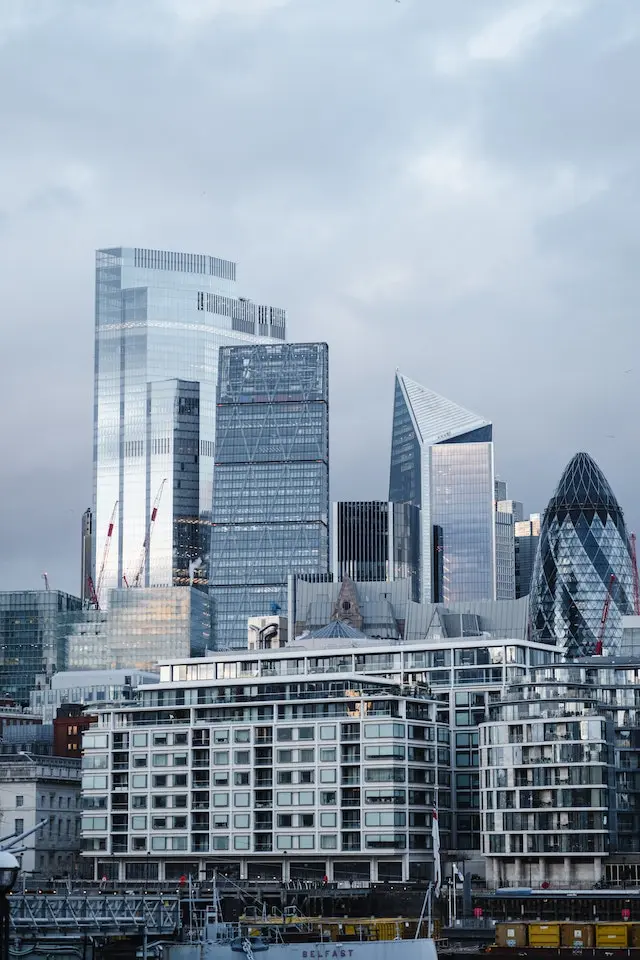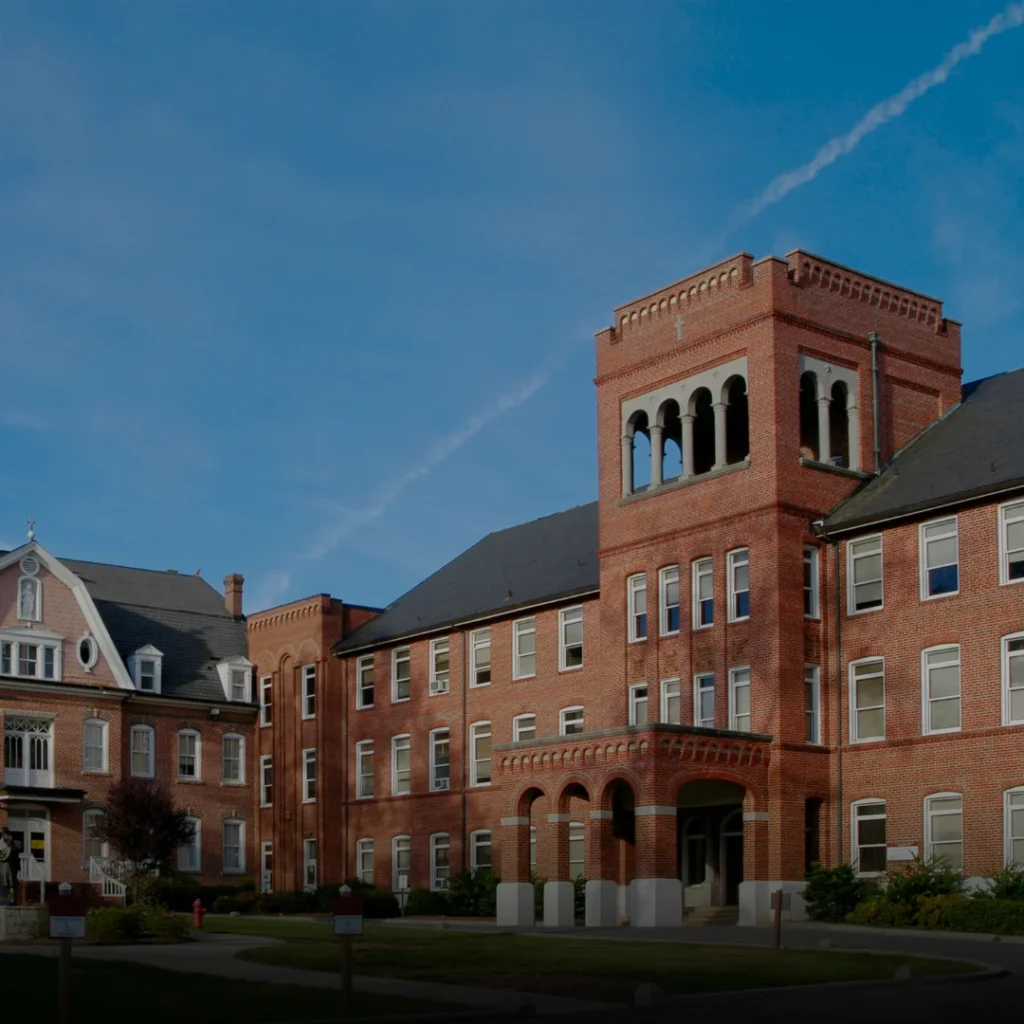The Advantages of Investing in Regeneration Areas
In the dynamic realm of urban development, “Regeneration Areas” have emerged as catalysts for transformative change. These areas, often characterised by underutilised or derelict spaces, are undergoing a remarkable revival. This article aims to shed light on the advantages of regeneration area investment and why this is a prudent choice for investors seeking both financial returns and positive societal impact.
Definition of Regeneration Areas: Regeneration areas, also known as urban regeneration zones, are regions earmarked for strategic redevelopment. They encompass neighbourhoods, districts, or even entire cities that have experienced economic decline, neglect, or environmental degradation. The focus here is not just on economic growth but on holistic revitalisation encompassing social, environmental, and economic aspects.
Importance of Investing in Regeneration Areas: Investing in regeneration areas holds profound significance in today’s urban landscape. These zones represent opportunities for investors to be part of a transformative journey that can yield substantial returns while contributing to the overall well-being of communities. They are the fertile ground where financial investments can nurture social cohesion, environmental sustainability, and economic vitality.
Purpose of the Article: This article aims to elucidate the myriad advantages of investing in regeneration areas, from economic gains to social and environmental benefits. By the end of this exploration, you will not only understand the rationale behind such investments but also gain insights into the strategies to navigate the unique challenges these areas pose.
Advantages of Regeneration Area Investment: Economic Benefits
Increased Property Values: One of the most tangible economic benefits of investing in regeneration areas is the potential for significant increases in property values. As neglected areas are revitalised, demand for housing and commercial spaces surges, resulting in enhanced property values.
Job Creation: Regeneration projects are potent engines for job creation. The redevelopment process requires a diverse workforce, from construction workers to architects and urban planners, stimulating local employment opportunities.
Business Growth: Regeneration areas attract businesses seeking affordable spaces with the potential for growth. As these areas flourish, businesses within them often experience increased foot traffic and revenue.
Infrastructure Development: Investments in regeneration areas frequently include substantial infrastructure upgrades, such as improved transportation networks and utilities. These enhancements not only benefit the immediate community but also enhance the overall attractiveness of the area for investors.
Advantages of Regeneration Area Investment: Social Benefits
Improved Quality of Life: Regeneration projects often lead to improved public services, better educational facilities, and enhanced healthcare access, directly contributing to an improved quality of life for residents.
Enhanced Community Engagement: Investing in regeneration areas fosters a sense of community pride and engagement. Residents and businesses become more involved in the redevelopment process, leading to stronger social bonds.
Reduction in Crime Rates: Revitalised areas tend to experience a decline in crime rates as increased economic activity and community involvement create safer environments.
Cultural and Social Diversity: Regeneration projects often celebrate the cultural diversity of an area, preserving heritage while creating spaces that welcome people from various backgrounds, fostering a vibrant, inclusive community.
Advantages of Regeneration Area Investment: Economic Benefits of Investing in Regeneration Areas
Regeneration areas are not just about revitalising communities; they also offer substantial economic benefits to investors and stakeholders. We will delve into these advantages, ranging from property value appreciation to job creation and infrastructure development.
Increased Property Values
Investing in regeneration areas can be a savvy financial move, with the potential for significant increases in property values. As these areas undergo revitalisation, the demand for housing and commercial spaces tends to surge. This heightened demand, coupled with the improved quality of life in the area, can drive property prices upwards. For investors, this translates into the prospect of handsome returns on their real estate investments.
Job Creation
One of the most tangible economic benefits of regeneration projects is their capacity to generate employment. The redevelopment process necessitates a diverse workforce, from construction workers and architects to urban planners and support staff. These projects breathe new life into the local job market, offering opportunities for both skilled and unskilled workers. In turn, this not only reduces unemployment but also contributes to the overall economic well-being of the community.
Business Growth
Regeneration areas are magnets for businesses seeking affordable spaces with potential for growth. As these areas flourish and become more attractive, businesses within them often experience increased foot traffic and revenue. The economic ecosystem benefits from the emergence of a thriving business environment, which can lead to the expansion of existing enterprises and the establishment of new ones. This virtuous cycle of business growth can significantly enhance the economic prosperity of the region.
Infrastructure Development
Investments in regeneration areas frequently include substantial infrastructure upgrades. These improvements go beyond aesthetics; they encompass essential elements such as transportation networks, utilities, and public spaces. Enhanced infrastructure not only makes the area more habitable but also drives economic development. Improved connectivity and access to utilities are particularly appealing to businesses, which can reduce operational costs and boost productivity. Moreover, better infrastructure makes the area more appealing to potential residents, further fuelling economic growth.
In conclusion, the economic benefits of investing in regeneration areas extend far beyond immediate financial gains. They create a ripple effect that positively impacts property values, job markets, local businesses, and infrastructure development. Investors who recognise the potential of regeneration areas stand to benefit not only from a return on investment but also from contributing to the broader economic rejuvenation of the community.
Social Benefits of Investing in Regeneration Areas
Investing in regeneration areas goes beyond monetary gains; it also fosters a range of social benefits that contribute to the overall well-being of communities. In this section, we’ll explore these advantages, including improved quality of life, enhanced community engagement, reduced crime rates, and the promotion of cultural and social diversity.
Improved Quality of Life
One of the most palpable social benefits of regeneration projects is the enhancement of residents’ quality of life. As neglected areas are revitalised, they often witness improvements in public services, educational facilities, and healthcare access. Residents can enjoy better amenities, cleaner environments, and enhanced recreational spaces. These enhancements translate into a higher standard of living for those residing in regeneration areas, making it an attractive proposition for both current and potential residents.
Enhanced Community Engagement
Investments in regeneration areas create opportunities for heightened community engagement. Residents and businesses become more involved in the redevelopment process, fostering a sense of ownership and pride in the area’s transformation. Community-driven initiatives, such as local events and cultural activities, often flourish in these revitalised neighbourhoods. This active participation helps in building stronger social bonds and nurturing a sense of belonging.
Reduction in Crime Rates
Regeneration projects frequently lead to a reduction in crime rates. The influx of economic activity, increased community engagement, and improved living conditions combine to create safer environments. As regeneration areas become more vibrant and desirable places to live and work, criminal activities tend to decrease. This reduction in crime further reinforces the positive social atmosphere, benefiting both residents and businesses.
Cultural and Social Diversity
Investing in regeneration areas often celebrates and promotes cultural and social diversity. These projects aim to preserve the unique heritage and identity of the area while creating spaces that are inclusive and welcoming to people from various backgrounds. This diversity not only enriches the cultural fabric of the community but also contributes to a more dynamic and cosmopolitan atmosphere. It fosters tolerance, understanding, and a sense of unity among residents, making regeneration areas vibrant hubs of multiculturalism.
In summary, investing in regeneration areas extends beyond economic gains to encompass significant social benefits. These projects result in improved quality of life, increased community engagement, safer environments, and the promotion of cultural and social diversity. Investors who embrace the holistic advantages of regeneration areas contribute not only to their financial portfolios but also to the creation of thriving, inclusive communities.
Environmental Benefits of Investing in Regeneration Areas
Investing in regeneration areas not only yields economic and social rewards but also offers significant environmental benefits. Advantages of regeneration area investment delves into how these investments promote sustainable development, green spaces, energy efficiency, and the reduction of pollution.
Sustainable Development
Regeneration areas provide fertile ground for sustainable development practices. By repurposing and revitalising existing infrastructure and spaces, these projects often reduce the need for new construction on untouched natural landscapes. This approach minimises habitat disruption, conserves resources, and promotes eco-friendly urbanisation.
Green Spaces and Urban Renewal
One of the notable environmental advantages of regeneration areas is the creation of green spaces and urban renewal. Neglected areas are often transformed into parks, gardens, and recreational zones. These green lungs not only improve the aesthetic appeal of the neighbourhood but also contribute to improved air quality and biodiversity. Urban renewal efforts also often involve the restoration of historic buildings, preserving architectural heritage and reducing the need for new, resource-intensive construction.
Energy Efficiency
Regeneration projects often incorporate energy-efficient designs and technologies. From retrofitting older buildings with modern insulation and heating systems to adopting renewable energy sources, these initiatives reduce energy consumption and lower greenhouse gas emissions. Energy-efficient lighting, smart grids, and sustainable transportation options further contribute to a greener, more sustainable urban environment.
Reduction in Pollution
Investing in regeneration areas can lead to a reduction in pollution levels. As these areas undergo redevelopment, there is a focus on sustainable transportation options, such as cycling lanes and improved public transit. This encourages fewer emissions from private vehicles, resulting in cleaner air and reduced carbon footprint. Moreover, the development of green spaces absorbs pollutants, acting as natural air filters and contributing to overall environmental health.
In conclusion, investing in regeneration areas not only revitalises communities but also promotes environmentally sustainable practices. These projects encourage sustainable development, create green spaces, enhance energy efficiency, and reduce pollution levels. Investors who embrace regeneration initiatives play a vital role in building a more environmentally conscious and resilient urban landscape.
Government Initiatives and Incentives for Regeneration Areas
Government support plays a pivotal role in driving investment and development in regeneration areas. In this part, we will explore the various initiatives and incentives that governments often provide to encourage investment in these revitalisation projects, including tax breaks, grants, funding programs, and regulatory support.
Advantages of Regeneration Area Investment: Tax Breaks and Subsidies
One of the most attractive incentives for investors in regeneration areas is the provision of tax breaks and subsidies. Governments recognise the vital role that private investment plays in rejuvenating neglected neighbourhoods. To incentivise such investments, they often offer tax incentives, such as reduced property taxes or capital gains tax relief. These measures not only make investments more financially appealing but also help offset some of the risks associated with regeneration projects.
Grants and Funding Programs
Governments frequently establish grants and funding programs specifically designed to support regeneration initiatives. These grants can cover a wide range of expenses, from infrastructure development to community engagement projects. They serve as a valuable source of financial assistance for both private investors and community organisations involved in regeneration efforts. Access to such funds can significantly lower the financial barriers to entry for investors and increase the likelihood of project success.
Regulatory Support
Regulatory hurdles can often hinder development projects, but governments are increasingly streamlining regulations and providing support to facilitate regeneration efforts. This may include expediting planning approvals, simplifying zoning regulations, or offering flexibility in land-use regulations. Such regulatory support not only reduces the time and costs associated with regeneration projects but also fosters an environment of collaboration between public and private sectors.
Government initiatives also extend to creating frameworks for sustainable development and environmental protection. Investors are encouraged to adopt eco-friendly practices, and there may be incentives for meeting specific sustainability criteria, such as energy efficiency standards or green building certifications.
In summary, government initiatives and incentives are critical drivers of investment in regeneration areas. Tax breaks, grants, funding programs, and regulatory support make these projects more financially viable and attractive to investors. By partnering with governments, investors can contribute to the revitalisation of neglected communities while enjoying the benefits of government-backed incentives.
Advantages of Regeneration Area Investment: Risks and Challenges of Investing in Regeneration Areas
While investing in regeneration areas offers numerous benefits, it is not without its fair share of risks and challenges. Advantages of regeneration area investment explores the potential obstacles that investors may encounter when embarking on regeneration projects, including initial investment costs, gentrification concerns, regulatory hurdles, and community resistance.
Initial Investment Costs
One of the foremost challenges in regeneration projects is the substantial initial investment required. Neglected areas often demand extensive infrastructure upgrades, environmental remediation, and property rehabilitation. These costs can be daunting, particularly for individual investors or small enterprises. Adequate financial planning and access to funding sources are essential to mitigate this challenge.
Gentrification Concerns
Gentrification, the process of wealthier individuals moving into a once-neglected area, can lead to concerns about rising property prices and the displacement of long-time residents. While regeneration can revitalise communities, it may inadvertently drive up housing costs, making it unaffordable for existing residents. Striking a balance between development and the preservation of the area’s character and affordability is a complex challenge.
Regulatory Hurdles
Navigating complex regulations and zoning requirements can be a significant hurdle in regeneration projects. Local authorities often have stringent rules regarding land use, building codes, and environmental standards. Delays and extra costs can arise when seeking necessary permits and approvals. Investors must be prepared to engage with regulatory authorities and work collaboratively to overcome these hurdles.
Community Resistance
Community resistance can pose a formidable challenge to regeneration projects. Residents may have concerns about the impact of redevelopment on their neighbourhoods, such as increased traffic, noise, or changes in the community’s character. Effective communication, community engagement, and a commitment to addressing these concerns are vital to gaining local support and fostering a collaborative approach to regeneration.
In conclusion, investing in regeneration areas presents significant opportunities, but it is not without its set of challenges. Addressing initial investment costs, gentrification concerns, regulatory hurdles, and community resistance requires careful planning, open dialogue, and a commitment to a balanced and sustainable approach. By proactively addressing these challenges, investors can maximise the positive impact of their investments in regeneration areas while minimising potential drawbacks.
Case Studies: Learning from Successful Regeneration Projects
To gain a deeper understanding of the benefits and challenges of investing in regeneration areas, it’s essential to examine real-world examples. In this part, we will explore successful regeneration projects and the valuable lessons they offer.
Successful Regeneration Projects
- London Docklands, UK: The London Docklands regeneration project stands as a shining example of urban transformation. Once a neglected area plagued by post-industrial decline, it has now evolved into a thriving financial district and residential hub. Key factors contributing to its success include strategic planning, investment in transport infrastructure, and the creation of attractive waterfront spaces.
- The High Line, New York City, USA: The High Line is a remarkable example of reimagining urban spaces. This elevated railway track was transformed into a vibrant linear park, fostering community engagement and spurring economic growth in the surrounding neighbourhoods. Its success highlights the potential of repurposing existing infrastructure to create green, inviting public spaces.
Lessons Learned
- Community Engagement is Key: Both the London Docklands and The High Line projects prioritised community engagement. Involving residents and businesses in the planning and decision-making process not only garnered local support but also ensured that the regeneration met the needs and aspirations of the community.
- Balancing Preservation and Innovation: Preserving the heritage and character of an area while fostering innovation is a delicate balance. Successful projects often find ways to celebrate the past while embracing modernity. This approach preserves the soul of a place while making it relevant for the future.
- Sustainable Practices Pay Off: Both projects incorporated sustainable practices, from green building design to energy-efficient infrastructure. Sustainability not only benefits the environment but also attracts environmentally conscious businesses and residents, contributing to long-term success.
- Public-Private Partnerships: Collaboration between public and private sectors was instrumental in these projects. Governments provided incentives and regulatory support, while private investors injected capital and expertise. Such partnerships can optimise resources and deliver comprehensive solutions.
In conclusion, these case studies underscore the transformative potential of investing in regeneration areas. They emphasise the importance of community engagement, balanced development, sustainability, and collaborative approaches. By drawing lessons from successful projects, investors can navigate the challenges and maximise the benefits of their own regeneration initiatives.
Advantages of Regeneration Area Investment: Investment Strategies for Regeneration Areas
Investing in regeneration areas can be a lucrative endeavour, but it requires careful planning and strategic thinking. In this advantages of regeneration area investment section, we will explore essential investment strategies that can help you make the most of your investment in regeneration projects.
Identifying Promising Regeneration Areas
- Research is Key: The first step in any successful investment strategy is thorough research. Identify areas that are ripe for regeneration by looking for signs of urban neglect, underutilised spaces, or government initiatives aimed at revitalisation. Factors such as location, existing infrastructure, and proximity to amenities are crucial.
- Gauge Local Demand: Understanding the demand for housing, commercial space, or community services in the area is vital. Speak to local residents, business owners, and community leaders to gain insights into their needs and preferences. This will help you tailor your investment to meet local demand effectively.
Diversifying Investment Portfolios
- Spread the Risk: Diversification is a fundamental principle in investment. Don’t put all your eggs in one regeneration basket. Instead, consider diversifying your investment portfolio across multiple projects or locations. This strategy spreads the risk and minimises the potential impact of setbacks in any one area.
- Mix of Asset Types: Consider investing in a mix of asset types within regeneration areas. This could include residential, commercial, and public spaces. Diversifying across different asset classes can help you capitalise on various growth opportunities and market trends.
Long-Term vs. Short-Term Investments
- Assess Your Investment Horizon: Determine your investment horizon: Are you looking for short-term gains or long-term stability? Regeneration projects can yield both, but the timeframes for returns may differ. Short-term investments may involve flipping properties, while long-term investments could focus on rental income and capital appreciation.
- Balancing Risk and Reward: Long-term investments often come with lower risk and steadier returns, while short-term investments can be more volatile but potentially lucrative. Consider your risk tolerance and financial goals when deciding on the mix of short-term and long-term investments in regeneration areas.
In conclusion, successful investment in regeneration areas demands a blend of meticulous research, diversification, and a clear investment horizon. By identifying promising areas, diversifying your portfolio, and balancing short-term and long-term strategies, you can optimise your investment in regeneration projects and contribute to their success.
Advantages of Regeneration Area Investment: Embracing the Potential of Regeneration Areas
As we conclude our exploration of investing in regeneration areas, it becomes evident that these projects hold immense promise. In this final section, we’ll recap the advantages, encourage investment in regeneration areas, and contemplate the future prospects and potential returns of such investments.
Recap of Advantages
Investing in regeneration areas offers a multitude of advantages. From economic benefits such as increased property values, job creation, business growth, and infrastructure development to the social advantages of improved quality of life, enhanced community engagement, reduced crime rates, and the promotion of cultural and social diversity, these projects are holistic in their impact. Moreover, regeneration areas champion environmental benefits like sustainable development, green spaces, energy efficiency, and reduced pollution. These multifaceted advantages underscore the transformative potential of investing in regeneration projects.
Encouragement for Investment in Regeneration Areas
The benefits discussed throughout this article provide compelling reasons for investors to consider regeneration areas as prime investment opportunities. Not only do these investments promise financial returns, but they also allow investors to be catalysts for positive societal change. By investing in regeneration areas, individuals and organisations can play a pivotal role in revitalising communities, fostering economic prosperity, and contributing to a more sustainable and inclusive urban environment. Moreover, government initiatives and incentives further sweeten the deal, making regeneration projects increasingly attractive.
Future Prospects and Potential Returns
Looking to the future, the prospects for investments in regeneration areas appear promising. As cities continue to grow and evolve, neglected areas hold untapped potential. The growing emphasis on sustainability, community engagement, and urban renewal further underscores the value of regeneration projects. Investors who adopt a thoughtful approach to identifying promising areas, diversifying their portfolios, and aligning their investment horizons with their goals stand to benefit from both short-term gains and long-term stability. Regeneration areas are not just investments; they are opportunities to shape the future of urban living while reaping financial rewards.
In conclusion, investing in regeneration areas is not only financially rewarding but also socially, environmentally, and culturally enriching. It represents a win-win proposition for investors and communities alike. As we move forward, let us embrace the potential of regeneration areas and contribute to creating vibrant, resilient, and sustainable urban landscapes.
Find out more about what’s happening in the property market in our News column.











